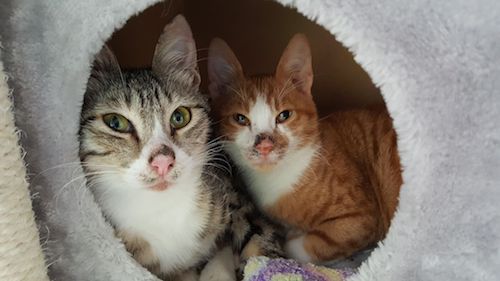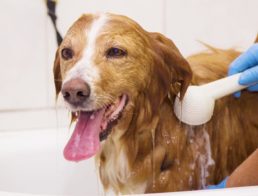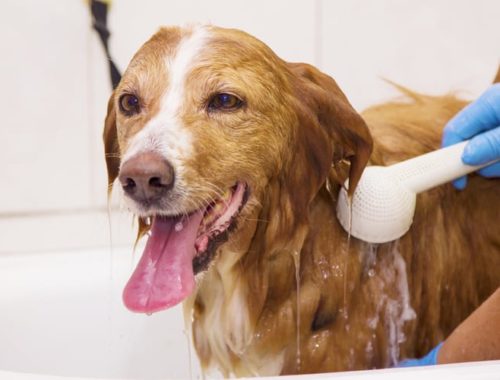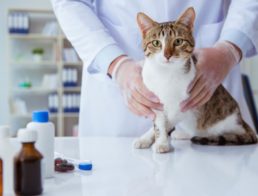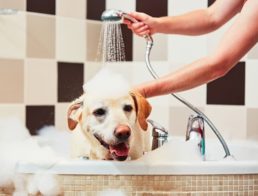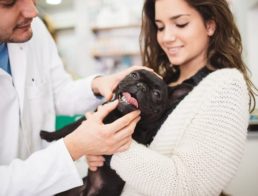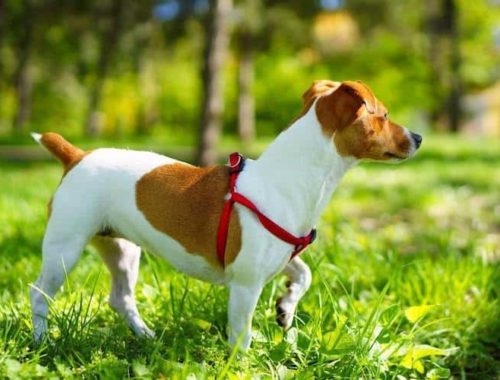Question: Why do my cats have dry, brown spots on their noses?
We have moved to a new country and our cats have developed these dry patches on their noses. What are these and is there a home remedy to get rid of it?
Thank you!
– Nana
Answer:
Dear Nana,
Thanks for sending in your excellent question and photo of your cats. I’ve seen other cats with similar looking lesions on their noses, but it’s not always easy to make a diagnosis. There are several possible causes for dry, dark areas on and around cats’ noses.
Allergies
Inhalant, food, and contact allergies can all cause dermatitis with scaly, dry skin. Allergic dermatitis often causes secondary bacterial or yeast infections that make inflammation worse.
Allergies are challenging to diagnose, but your veterinarian can guide you through the steps. They may include allergy testing and a hypoallergenic food trial.
Fungal Infection
Ringworm (yes, it’s a fungus, not a worm) and other fungi can cause changes to the inside and/or outside of a cat’s nose. Cats can become infected by contact with other infected animals or from fungal spores in the environment.
Veterinarians diagnose skin fungal infections by incubating a sample of hair or superficial skin on culture medium. Fungal infections may be contagious between cats and some are even contagious to humans. Anti-fungal medications are an effective treatment for skin fungal infections in cats.
Parasites
Cats can be infested by various types of mites including Demodex and scabies. Mites, especially Demodex, sometimes cause inflammation only on a certain part of the body.
Your veterinarian can look for these with a tape cytology, skin scrape or may want to take a skin biopsy. The good news is that mites are treatable.
Solar Dermatitis
Solar dermatitis occurs when a cat’s skin is exposed to natural sunlight. Prolonged exposure to UV light damages skin cells, leading to inflammation. Cats with unpigmented skin are more prone to this syndrome with lesions developing on their ears and noses.
Solar dermatitis is diagnosed by ruling out other causes of flaky skin lesions. Sometimes vets need to get a skin biopsy to make the diagnosis.
Treatment consists of anti-inflammatories, antibiotics, and sun avoidance. Once a cat has developed solar dermatitis, the future risk for skin cancer is higher, so it’s very important to make a diagnosis.
Steps You Can Take
Until a diagnosis is made, you can take some precautionary measures at home that might help your cats’ skin.
- Use ceramic food and water dishes (no metal or plastic).
- Wash all food and water dishes with hot, soapy water and rinse well DAILY. Bacteria can build up on food dishes and affect your cat’s skin when they come in contact with it.
- Limit sun exposure by keeping cats in the shade when they go outside.
I hope you’re able to get your cats in to see a veterinarian soon. Getting a specific diagnosis is the quickest way to finding the best treatment so your cats will be in top form again!
Sincerely,
TB Thompson DVM
Disclaimer: Your use of the Ask The Vet feature is subject to the Ask The Vet Terms of Use.


